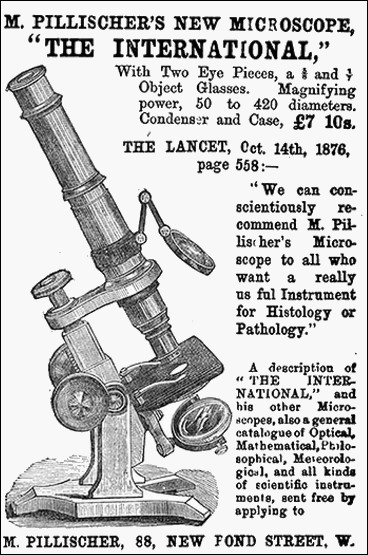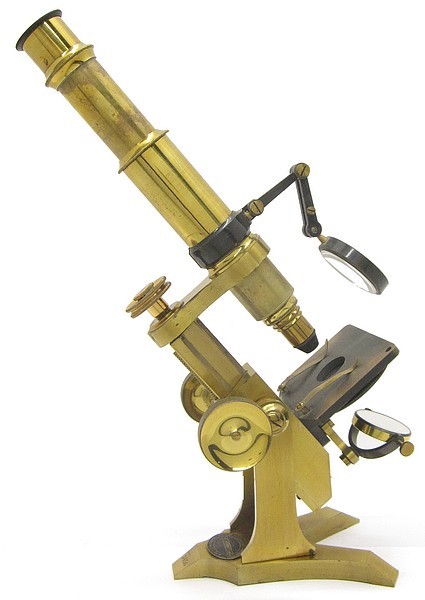
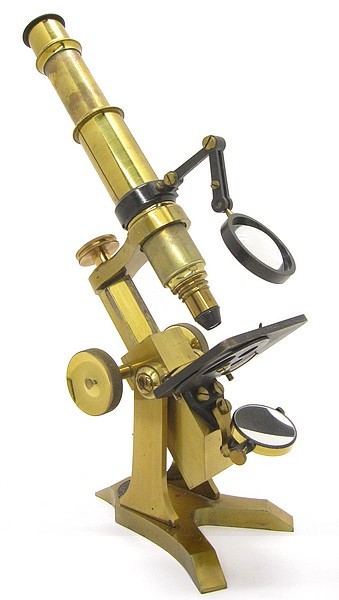
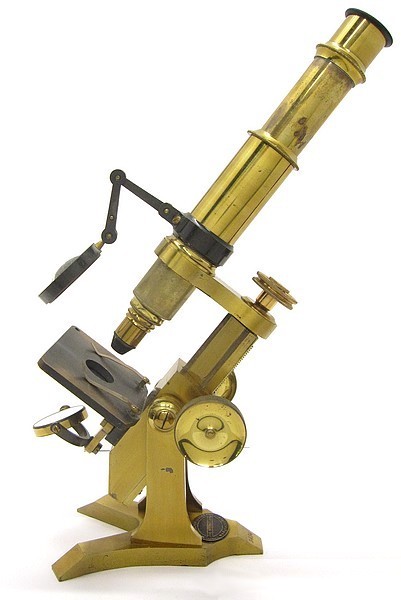
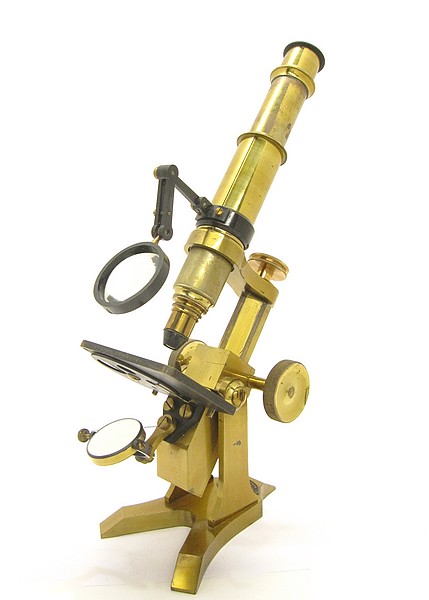
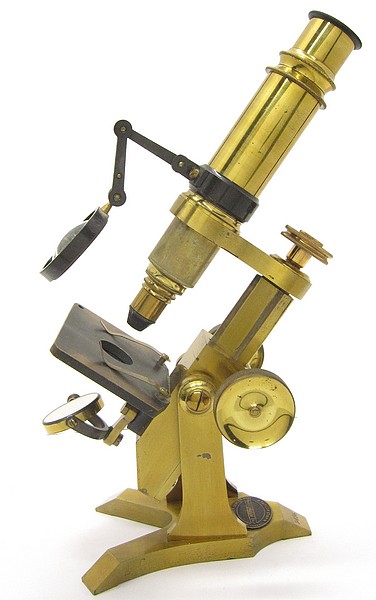
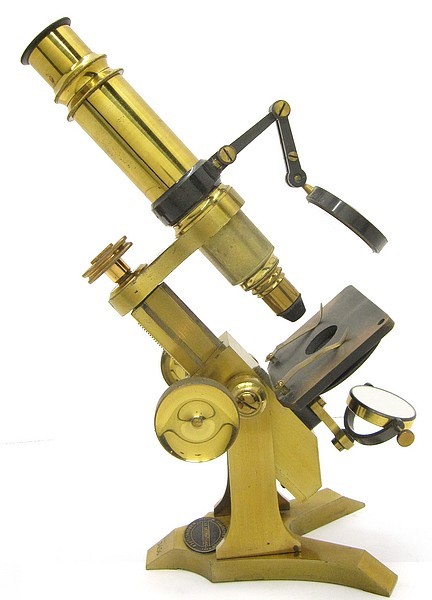
This model was introduced in 1876. It was designed to work with objectives corrected for either the English or Continental tube lengths by utilizing a draw-tube (hence, the name: The International Microscope).
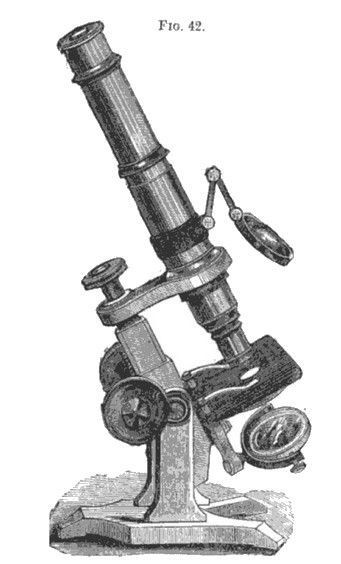
The following was taken from The Microscope and Its Revelations by William Benjamin Carpenter, 1881
Pillischer’s International Microscope - The Student who may be willing to incur a slight additional expense, for the sake of obtaining a substantial and well-constructed instrument, cannot do better (in the Author's judgment) than possess himself of the International Microscope of Mr. Pillischer (fig 42), in which the advantages of British and Continental methods are ingeniously combined. The pillar, carrying a rack-movement with double milled-head, is swung on two uprights set on a solid foot, in such a manner as to be well balanced; and at the top of the racked stem is the milled-head that works the screw for fine adjustment, raising or lowering the horizontal arm which carries the body, without twist or loss of time. This arm carries a tube firmly screwed into it, through which the body slides; and while this arrangement, by giving additional support to the lower part of the body, effectually antagonizes vibration, it allows the body to be raised to a height that permits the use of objectives of 3 or 4 inches’ focus, for which the rack-movement is not long enough to provide. On the outside of this tube is a clip having attached to it a jointed arm that carries a condensing lens for opaque objects; which, by raising or lowering the clip, or turning it round the tube, can be brought into any required position. The stage is simple, and carries a rotating diaphragm plate on its under side. The mirror is attached to a swinging bar, which might easily be made to elongate like that of the Wale Microscope. The special merit of this model (of which the Author can speak from considerable experience of its use), lies in the facility with which both the coarse and the fine movements may be worked with either of the hands, while resting on the table in the position most convenient for manipulating the object on the stage; an advantage which every real worker with a simple instrument of this class will appreciate.
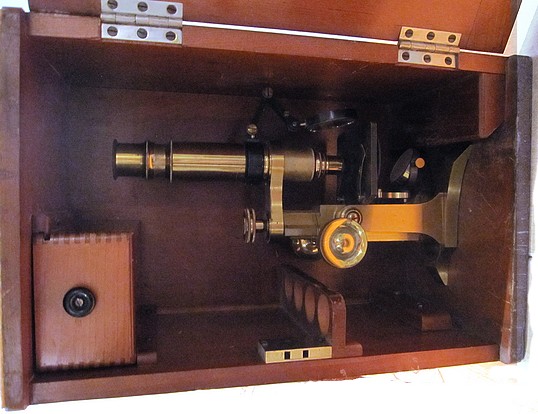
The storage case is a replacement.
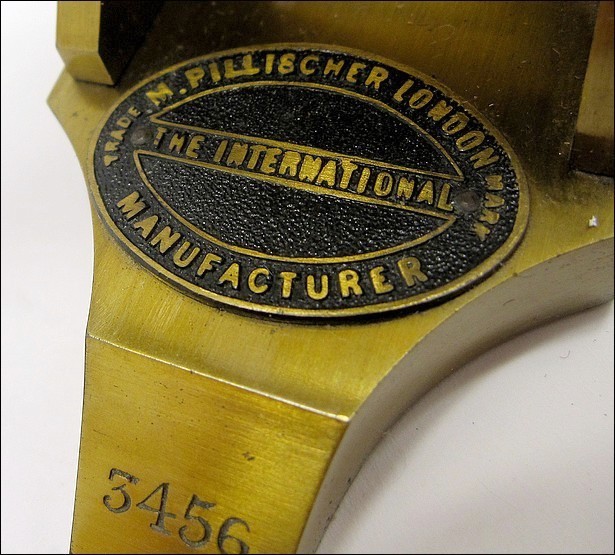
Moritz Pillischer established his business as a
scientific instrument maker around the 1840's. He made or sold a
variety of scientific instruments and is well known for his
microscopes. He retired in 1887 and the business was taken over by
his nephew, Jacob Pilliischer. The firm continued well into the 20th
century.
See the Pillischer Family Timeline. Also, see this detailed
essay about the Pillischer microscopes and business.
